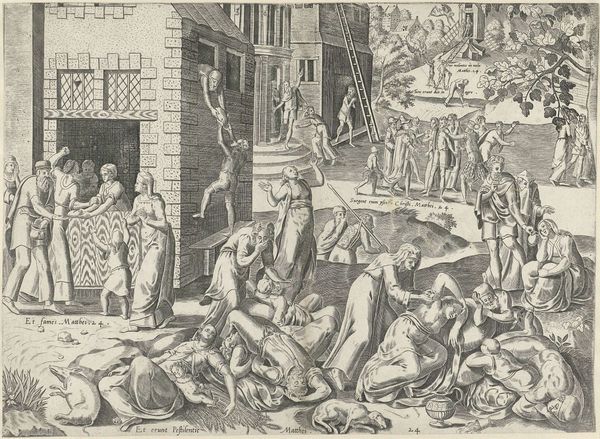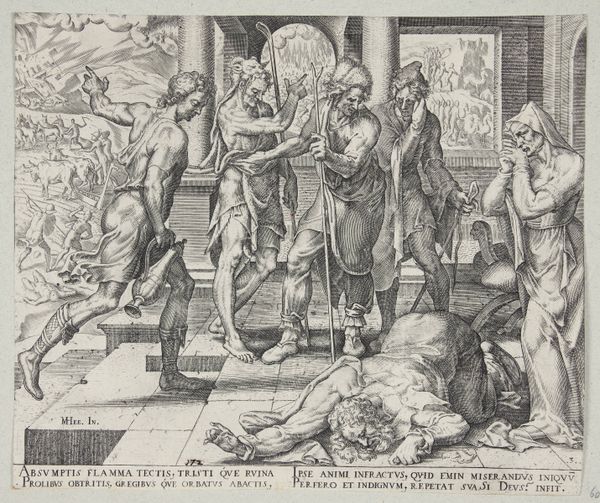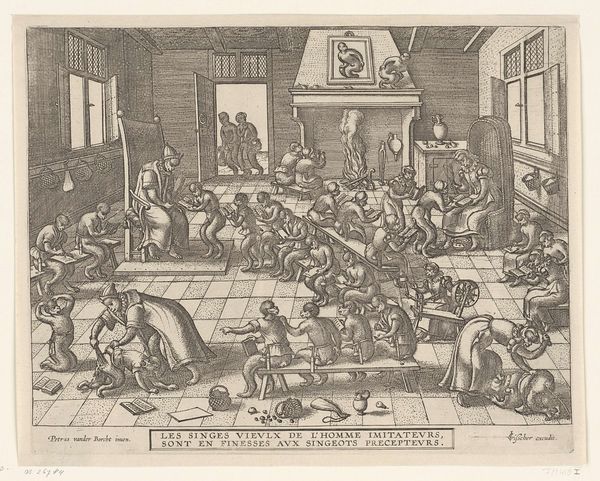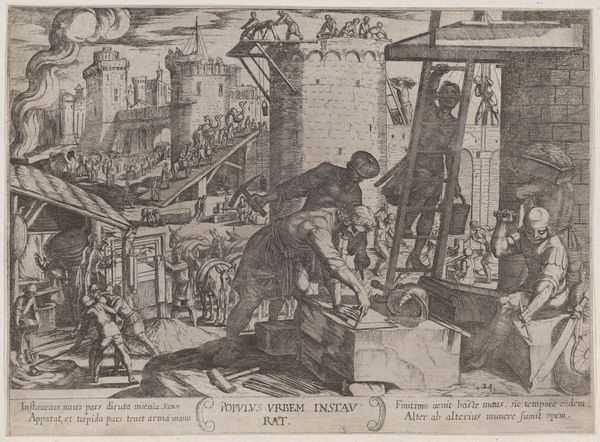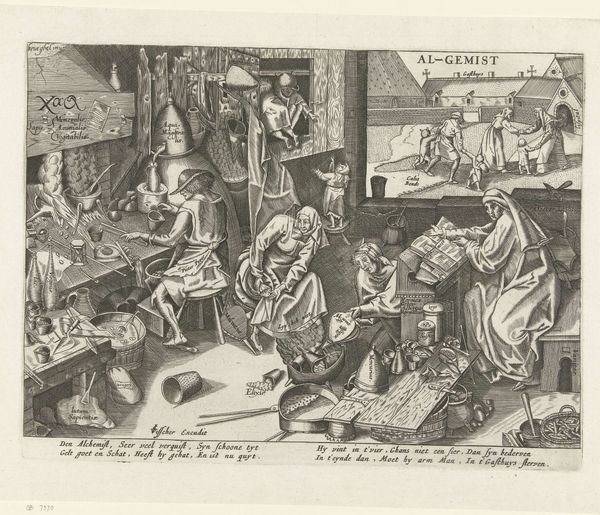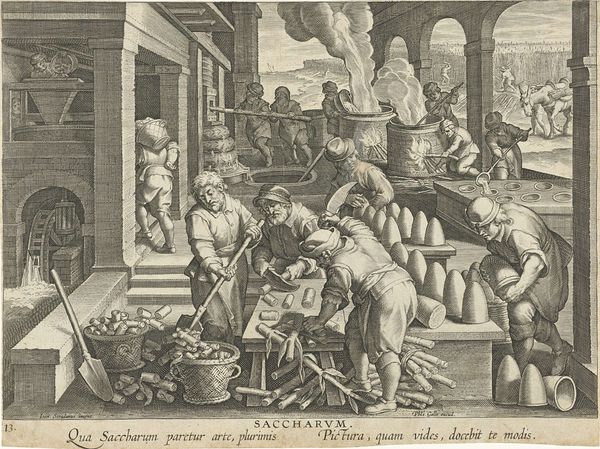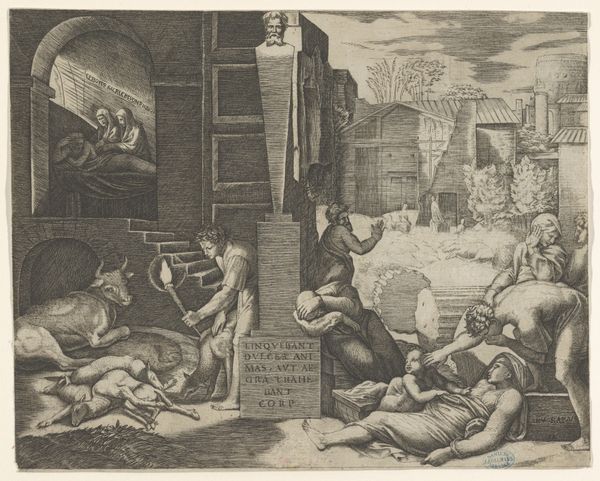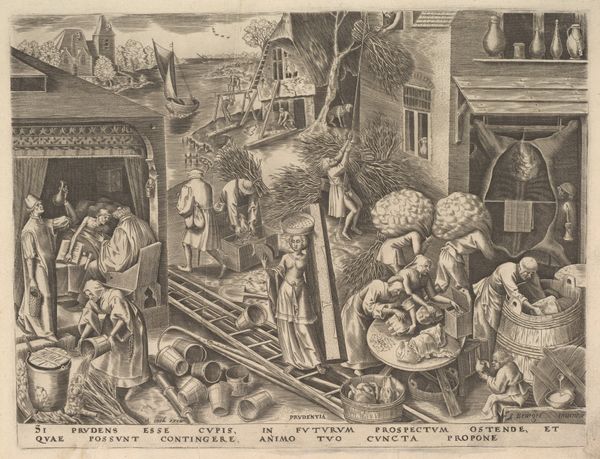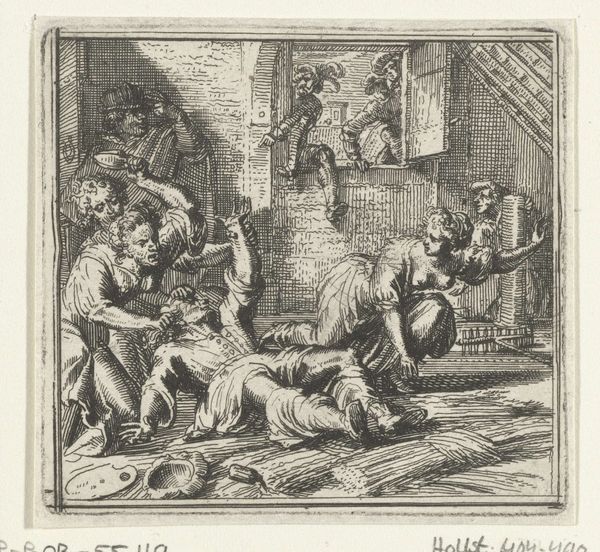
print, etching, engraving
#
narrative-art
# print
#
etching
#
old engraving style
#
figuration
#
genre-painting
#
history-painting
#
northern-renaissance
#
engraving
Dimensions: height 218 mm, width 283 mm
Copyright: Rijks Museum: Open Domain
Curator: This engraving, entitled "De dood is de armen welkom," meaning "Death is Welcome to the Poor," was created between 1595 and 1600 by Johann Sadeler I. It is currently held in the Rijksmuseum. What are your initial thoughts? Editor: Stark. The scene's detailed representation of poverty juxtaposed with the figure of Death is very confronting. I'm immediately drawn to the textures – the rough wood, worn fabrics, the sheen on those meager bowls. The labor involved in its creation is evident. Curator: Absolutely. Considering the socio-economic context of the late 16th century, this piece can be interpreted as a social commentary on the disparities between the wealthy and the impoverished. Death, usually feared, is presented almost as a liberator from earthly suffering. Editor: Exactly. Look at the tools scattered around. This is about the raw physicality of survival, the relentless labor demanded of the poor. Death is shown in contrast to these people: exhausted and draped in chains in contrast to them trying to make the most of living. Curator: And there's a stark contrast, too, between the interior squalor and the implied freedom of the outdoor scene seen through the doorway. This invites us to reflect on how deeply social and economic structures influence life, and even death itself. Consider, too, how this image might have been perceived then versus now, given shifts in societal attitudes and beliefs. Editor: The print medium itself adds to this discussion. Engravings made it accessible, democratizing these images of morality and critique. The ability to reproduce this and circulate such commentary is deeply ingrained in the social power of the medium itself. Curator: The figuration, so typical of the Northern Renaissance, also emphasizes genre painting and history. These styles are brought together to show the experience of the poor is part of everyday and historic narratives. It makes us wonder, what other historic struggles are omitted from history due to their socio-economic insignificance. Editor: For me, it underscores that art doesn't exist in a vacuum; it's embedded in the material conditions of its creation and reception. Analyzing those elements gets to the heart of its power. Curator: I think that's it. This image really illuminates the many layered historical contexts of art! Editor: I agree completely. Let's move onto the next work now!
Comments
No comments
Be the first to comment and join the conversation on the ultimate creative platform.
